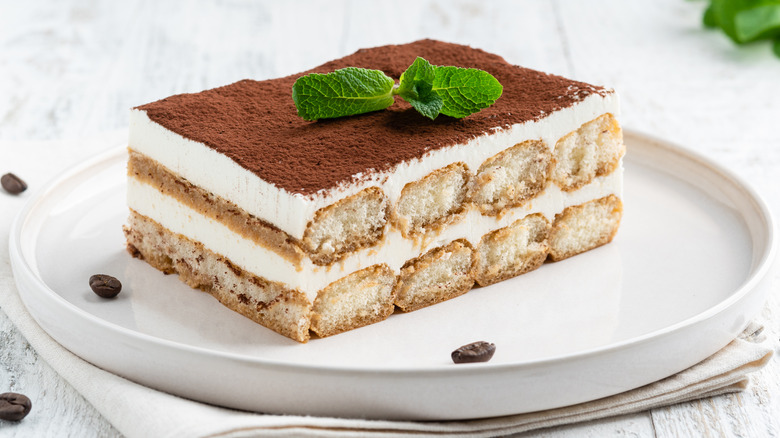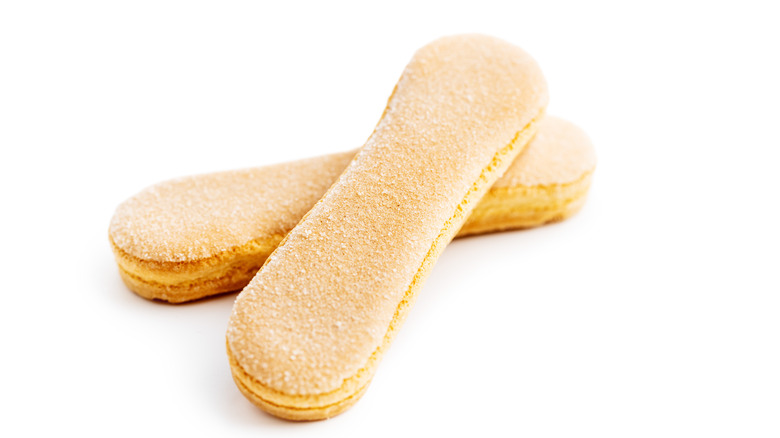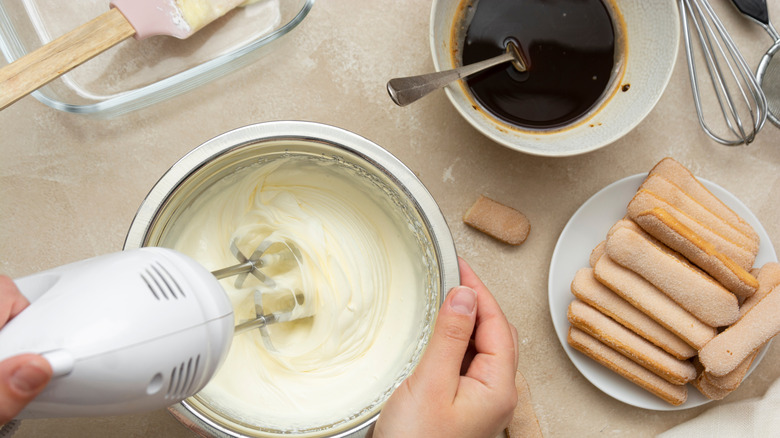How To Work With Firm Vs. Soft Ladyfingers In A Tiramisu
Tiramisu may seem like a dessert fit for royalty, and in fact one of the earliest versions of this luscious treat was known as an "imperial cup." But its simplicity actually makes it a dessert that's even great for beginners. The layers of coffee-soaked ladyfingers and mascarpone cream topped with cocoa powder may have been served in a goblet worthy of kings and queens, but this dish is actually surprisingly simple to make, and its incredibly rich flavors make it a guaranteed crowd-pleaser.
One of the most important ingredients in your tiramisu are the ladyfingers. These sponge cake cookies serve as the main body of your tiramisu. Each layer of mascarpone cream will settle into the nooks and crannies between them, and are the only durable ingredient to give any variety in texture to the dessert. They're also responsible for bringing the coffee flavors into the dish as well. Because of their role, it's incredibly important to make sure that the ladyfingers are mixed with the coffee and layered correctly. Otherwise you may end up with a soggy mess of a dessert on your hands.
How to use firm ladyfingers
The challenge of dealing with ladyfingers is their inconsistency. Ladyfingers are basically mini-sponge cakes in the shape of cookies. When they're made fresh they have a soft, cake-like texture. However, store-bought varieties are often much drier and crunchier instead. Because these two totally different textures exist, you need two different approaches for coating each ladyfinger in espresso.
In Italian ladyfingers are often called savoiardi. This is because they were originally created by the royal House of Savoy back in the 11th century . Searching for proper savoiardi cookies online and in the cookie aisle of your local grocery store should help ensure that you're getting the more firm variety of biscuit.
This style of ladyfinger is able to soak up a decent amount of coffee without losing much of its durability since they're already dried out. That means that they can handle a quick dip into the coffee without much worry about breakage. This makes them also typically easier to handle than their softer counterparts, which require more care.
How to work with soft ladyfingers
While there's nothing wrong with using soft ladyfingers in your tiramisu, they do require a little extra care. The moisture of the coffee and cream can easily cause a softer ladyfinger to fall apart on its way into your preferred pan or dish. Instead, you can arrange your unsoaked cookies into a layer in the pan, and then brush them with coffee. This way you won't have to worry about them falling apart, and will have more control over how much coffee is added.
Whether you go with soft or dry ladyfingers, you don't want to add too much espresso to your biscuits because it can cause the mascarpone to split and become runny. A quick dip, or a simple pash of a pastry brush is all that is needed to infuse your cookies with flavor.
If you're interested in making your own ladyfingers at home — though Claire Saffitz thinks store-bought is fine — it's possible that you will be working with softer ladyfingers. This can be nice if you can't find good quality ladyfingers in your area or just want to add your own flavors. Just remember to treat them with care, and your tiramisu will soar.


